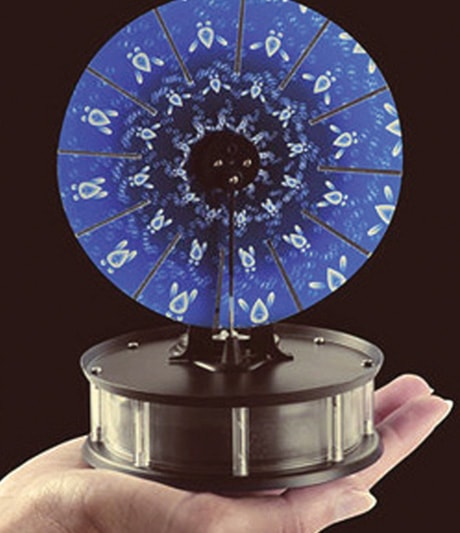Perhaps an ancestor’s invention holds a key
While commenting on the Pope’s stand against condoms as a solution for Africa, I never thought I would find myself immersed in the subject. But here I am.
I’d mentioned the statistics about condom distribution in Africa to my husband, and he reminded me of a Fela Kuti concert we’d seen in Calgary in the 1990s.
Kuti was a Nigerian musician, and pioneer of Afrobeat music from the 60’s on.
That evening we rocked to his bold and powerful African rhythms. His collection of scantily clad African dancers did some of the most amazing pelvic gyrations in extremely sexual poses, right in front of our faces on stage!
It was a highly charged sexual experience just watching this performance, and partway through, Kuti proudly noted something to the effect that: “I am an African man and I have to have sex five or six times a day or I am not a man.”
Indeed, Wikipedia notes that in 1978 he had 27 wives simultaneously, though within a year he had pared that down to 12 wives in a rotation system.
Kuti died of AIDS in 1997.
Clearly some African concepts of sexuality are very far removed from those puritanical ones of ours in the West.
I was wondering where these thoughts would lead. How can we in the West actually help Africans — beyond imposing our sexual mores?
Access to drinking water is the key problem there. In a subsistence existence like African, all of the productive labour time is spent in gathering firewood, carrying water from the river, caring for the few animals there are and making subsistence food – like breads.
There is no microwave dinner, ready to eat in three minutes, in Africa. Everything takes time and hard labour under hot sun. And then it is dark. No working light.
And then I remembered Dr. Joe Walker’s concept. Walker was a professor of Mechanical Engineering at the U of C in the 1980’s and an expert in the Stirling Engine. He met my father at a trade show, intrigued to learn of our relationship to the inventor of the Stirling Engine. We hit it off and kept in touch.
Some years later, while I was living in Israel, Walker sent me an idea for a simple solar-powered Stirling Engine for Africa — it was a design that could solve many problems at once.
Maybe Chrysler and GM can be flipped to crank out millions of these kits and liberate Africa while saving themselves?
Walker’s idea was to use a solar collector to power a very simple Stirling engine ‘home kit’ to drive a generator. The Stirling Engine also works as a refrigerating engine, so by driving the generator, you could cool a residence some 5 degrees.
In Africa, this would be significant in terms of comfort, reducing fatigue and dehydration, and maintaining the quality of food.
At the same time, the generator would create enough power to run a small (say 40 watt) lamp for a few hours every evening. This would reduce the dependency on firewood (which takes hours to gather and depletes the environment) and provide light and additional daytime for reading or doing income earning handicrafts.
As well, the design would collect dew and the engine’s operation also results in a small amount of water being generated — a precious commodity in those mostly desert lands where contaminated water or lack of wells is the norm.
If we really want to help Africa to help itself, then we have to provide more complete packages of assistance, not just funnelling financial aid to corrupt governments.
We have to deliver useful tools into the hands of the people. We have the technology, and now, by default, we have the manufacturing facilities. Do we have the will?
Michelle Stirling-Anosh is a Ponoka-based freelance writer.
